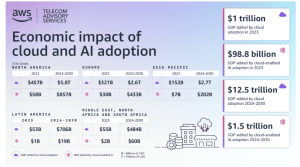TikTok is one of the fastest-growing social-media apps in the U.S. It’s even challenging Facebook, which has been dominant for more than a decade.
In 2021, the app, which is especially popular with younger people, had 78.7 million U.S. users — almost a quarter of the population. This number is projected to grow to 84.9 million in 2022, an increase of around 8%. Facebook had 302 million U.S. users last year.
So how did this network, owned by China’s ByteDance, become so popular, so fast? Once you install the app, the answer becomes obvious.
Frivolous content
The majority of TikTok content is frivolous, even cringeworthy, but users don’t seem to mind. The app is almost the opposite of what you’re used to seeing on Instagram (owned by Meta Platforms
FB,
which also owns Facebook), with creators seemingly going out of their way to denounce Instagram’s aesthetics and originality.
Embracing the silliness to the fullest is the app’s biggest strength. Setting the entry bar really low, TikTok leaves an impression of a platform anyone can jump onto and create content quickly and without a lot of work.
That makes users feel safe in expressing themselves, which in turn motivates them to them create more content and share it with one another, and the cycle continues. Also, almost zero onboarding, simplicity and ease of use cater to Gen Z with shorter attention spans, and it’s the key to the continuous acquisition of new users.
Sifting through the videos is quick and easy, and time flies by when you’re having mindless fun. It’s easy to understand why Gen Z loves TikTok. For some, however, this goes beyond simply liking the app — it can become an addiction.
There are a few reasons why this can happen; the platform has often been criticized for promoting a “keep up with the Joneses” mentality, as users are often encouraged to share their latest and greatest content in order to gain likes and followers.
That can be addictive for some users who become obsessed with gaining online affirmation and followers. Also, TikTok’s algorithm is quite accurate at providing videos based on personal preferences, which makes it even more enticing for a casual, bored user.
Bored Gen Z
Finally, let’s not forget lockdowns and restrictions that have exerted an enormous psychological toll on everyone, especially younger generations. TikTok provides its socially starved users an alternative way to stay connected, hang out and share experiences.
Conversely, abstaining from using the app triggers FOMO in some users, making them anxious due to the feeling of being excluded and out of the loop with the rest of the TikTok community.
Those mechanisms play a role in what is now a global phenomenon. Allowing users to generate and consume original entertainment has proven to be a big hit for TikTok globally — this goes especially for the poor denizens, especially in China and India. In a way, TikTok has become for the lower-income classes what Instagram was for the middle and upper classes. Due to sheer numbers of this demographic, the proliferation of the app globally has been tremendous.
TikTok’s twin
Speaking of China, there’s an interesting piece to the TikTok puzzle there. Before TikTok, there was Douyin, an original version of the app that currently runs in China. Chinese residents cannot download TikTok, and there is no Douyin in international users’ app store directory. (There are other ways to download the app.)
While they share the same technology, the content these two versions provide is different. Due to China’s censorship and the restrictions the Great Firewall imposes on all its residents, Chinese users are able to consume and create content only within mainland China. To appease the Chinese Communist Party, Douyin also features a “positive energy tab” — a flick sideways is all it takes to provide any Douyin user with a steady stream of government-approved propaganda.
Aside from the usual propaganda nonsense, up until August 2021, the biggest difference was the ability to purchase goods over Douyin. The international version was limited to purchases of virtual goods, such as coins and gifts, which you could then send to content creators. On Douyin, users could purchase a wider range of goods — from cosmetics to home appliances (and anything in between).
The platform thrives on the psychology of impulse buys where a purchase is just a tap away. These products are promoted by Chinese influencers, key opinion leaders that Douyin users know and respect.
Shopping feature
Now all these features, dubbed “TikTok Shopping,” have been made available for the international version as well. TikTok’s official blog says that TikTok Shopping “will bring new features that help Shopify merchants create engaging, organic content that sends consumers directly to their online store for checkout, making it easy for people to explore and buy the products they discover on TikTok.” Ottawa-based Shopify
SHOP,
is one of the fastest-growing ecommerce platforms.
TikTok Shopping will undoubtedly bring an additional stream of revenue for the platform, as a younger audience starts splurging on products touted by their beloved influencers and celebrities.
TikTok is already big, but could become even bigger in the future. If Meta Platforms pulls Facebook and Instagram out of the EU, that would create a void as Instagram-hungry Europeans start seeking out alternatives. TikTok is more than a viable replacement for Instagram — here’s why — and will likely spread like wildfire, should these threats come to fruition.
This could spell big trouble for Meta CEO Mark Zuckerberg & Co., as TikTok is already making major inroads into the social-media landscape. As of now, it’s the most downloaded app in the world, and with Facebook’s waning popularity — especially among younger users — it may be only a matter of time before TikTok becomes the dominant social-media player.
This post was originally published on Market Watch






